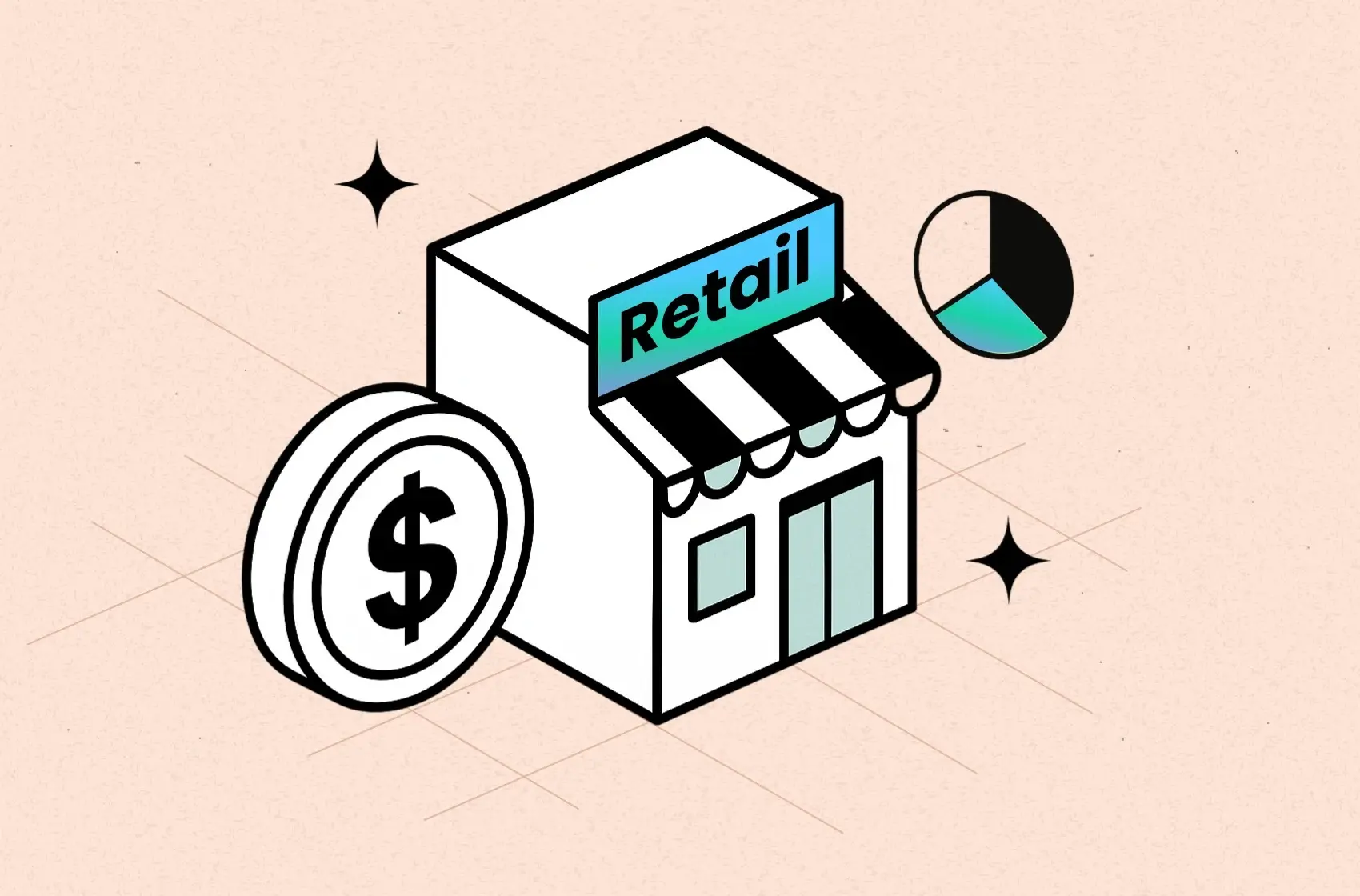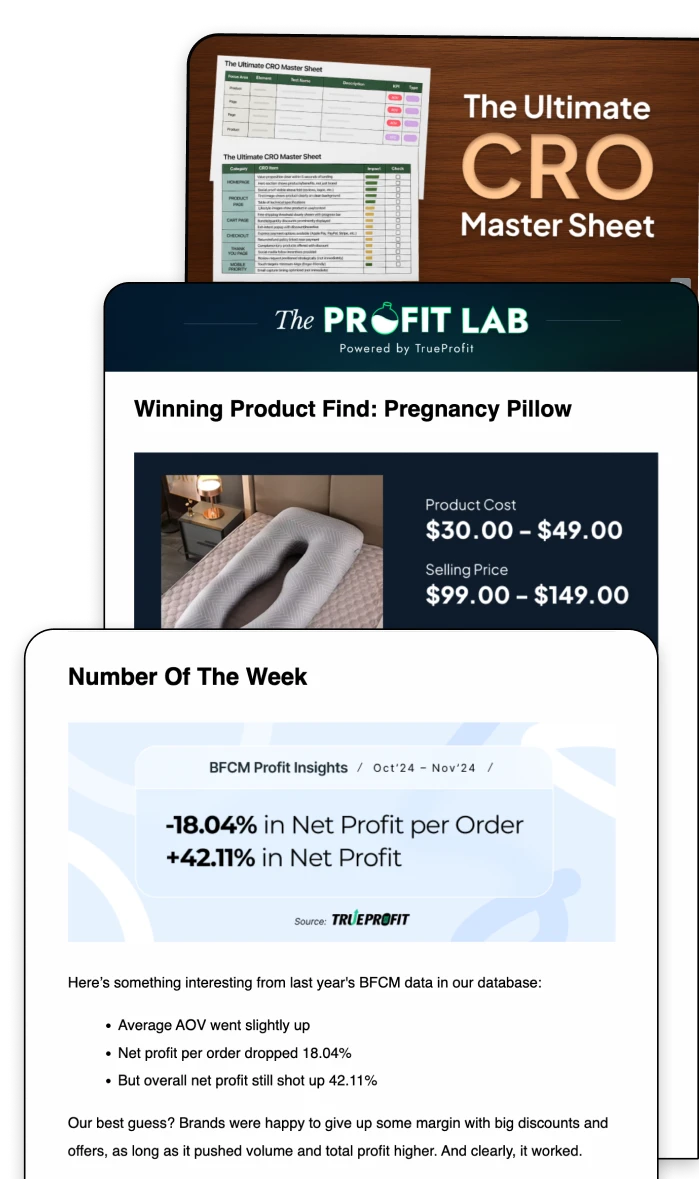Retail Store Profitability Analysis: The Retailer’s Guide to Measuring Profitability

Retail store profitability analysis is the process of evaluating how effectively a retail store generates profit by examining its revenues, costs, and financial metrics. It helps store owners determine how well their business is performing financially and identify opportunities to improve margins and growth.
By regularly performing profitability analysis, retail businesses can make informed decisions about pricing, promotions, and cost management.
It is a critical step for financial planning and long-term business success.
In this guide, you’ll learn:
- What retail store profitability analysis means
- The key metrics you need to track to understand your true profit
- How to use this analysis to improve your margins
Let’s dive in.
What is Profitability Analysis in Retail?
Retail store profitability analysis is the process of evaluating how effectively a retail store generates profit.
It involves examining revenues, costs, and other financial metrics to determine how well a store is performing financially. The goal is to identify strengths, weaknesses, and opportunities for improvement to maximize profit.
At its core, successful retailers track three key profit margins, each giving a different view of your store’s performance:
- Gross Profit Margin
- Operating Profit Margin
- Net Profit Margin
These key profit margins help you see how each part of your store affects your overall profit.
Gross Profit Margin
Gross profit margin measures the percentage of revenue that remains after subtracting the cost of goods sold (COGS) from total sales. It reflects how efficiently your store produces or sources products relative to what you earn from selling them.
Calculate it using:
For example, if your retail sporting goods store generates $150,000 in quarterly sales with $90,000 in product costs, your gross profit margin is 40%. This means 40% of every sales dollar is available to cover rent, staffing, utilities, and other operational expenses while generating profit.
Operating Profit Margin
Operating profit margin is the percentage of revenue that remains after covering all operating expenses, excluding interest and taxes. It shows how efficiently your store turns sales into profit from core operations.
The formula is:
A higher operating profit margin means your store keeps more profit from each dollar of sales, helping you measure the health of your business before other financial factors come in.
Net Profit Margin
Net profit margin is the percentage of revenue left after all expenses, including operating costs, interest, and taxes, have been deducted. It shows how much actual profit your store keeps from each dollar of sales.
It's calculated as:
Net profit margins vary significantly across retail sectors. Furniture stores typically achieve net margins between 6-10%, while grocery stores often operate with net margins below 3% due to high volume and competitive pricing pressures.
Essential Metrics for Analyzing Retail Profitability
To truly understand your store’s profitability, you need to track a set of interconnected metrics that reveal how your retail operation turns sales into real, sustainable profit.
Below are the essential KPIs that matter most:
Net Profit on Ad Spend
Net Profit on Ad Spend measures the actual profit earned for every dollar spent on advertising, taking into account all costs, not just revenue generated.
It is calculated as:
This metric helps you evaluate the true effectiveness of your advertising campaigns by showing whether your ad spend is generating profitable returns after all costs, not just sales, are considered.
Average Order Value (AOV)
Average Order Value measures the average amount a customer spends per transaction in your store.
It is calculated using the formula:
Tracking AOV helps you understand customer purchasing behavior and informs strategies to increase order sizes through upsells, bundles, or free shipping thresholds, thereby improving overall revenue and profitability.
Average Order Profit (AOP)
Average Order Profit measures the average profit your store earns from each order after accounting for COGS and variable costs tied to that order.
It can be calculated as:
AOP provides insight into the profitability of each transaction, helping you identify whether your current pricing and cost structures support profitable sales.
Customer Acquisition Cost (CAC)
Customer Acquisition Cost (CAC) measures the average cost of acquiring a new customer, allowing retailers to evaluate the efficiency of their marketing and sales activities. It is calculated using the formula:
A lower CAC means you’re getting better returns on marketing spend, freeing up resources for operations and profit growth. Regularly evaluate which channels bring in quality customers at the lowest cost.
Lifetime Value (LTV)
Customer Lifetime Value (LTV) measures the total revenue a retailer can expect from a customer throughout the entire customer relationship. It is calculated as:
You can find it using:
Return Rate
Return Rate indicates the percentage of products sold that are returned by customers, reflecting the quality of products and customer satisfaction levels. It is calculated using the formula:
High return rates may signal product quality issues, inaccurate descriptions, or mismanaged customer expectations.
These key metrics are important for tracking your retail store’s financial health, but they are only one part of a complete performance analysis. Learn more 15+ essential eCommerce metrics to expand your tracking system.
How to Use Your Retail Store Profitability Analysis
1. Set Prices That Protect Your Margins
You can use retail store profitability analysis to set prices that protect your margins.
By analyzing your gross profit margins, it ensures you set product prices high enough to not only cover the cost of goods sold (COGS) but also contribute to profitability.
This is a warning from our founder, Mr. Harry Chu: “If products are priced too low, even high sales volume may not generate enough profit to cover operating expenses or support business growth.”
2. Control and Reduce Unnecessary Expenses
Retail store profitability analysis can be used to control and reduce unnecessary expenses by providing a clear view of how operating costs impact overall profitability.
By analyzing metrics such as operating profit margin, you can see if expenses are consuming too much of your revenue and spot areas where costs can be reduced or managed better.
3. Measure Your Marketing’s True Profit
You can use analysis to measure your marketing’s true profit return.
By tracking metrics like Net Profit on Ad Spend (NPOS) and Customer Acquisition Cost (CAC), along with the revenue and profit from your campaigns, retailers can see if their marketing efforts are truly boosting profitability.
4. Spot Your Most Profitable Products
Retail store profitability analysis helps you identify which products truly drive profit in your business.
It analyzes the revenue each product brings in alongside related costs like COGS, return rates, and handling expenses, letting you see which products add to your profit and which ones may be holding it back.
By focusing on product-level profitability, you can make better decisions about what to promote, restock, and prioritize to improve your bottom line.
5. Plan Cash Flow with Confidence
Profitability analysis helps retailers see how well their sales turn into available cash.
It shows how operating expenses (OpEx) and the cost of goods sold (COGS) affect profit. By tracking these costs along with gross profit margins, inventory turnover, and operating profit margins, retailers can forecast cash inflows and outflows more accurately.
Analyze Profitability of your Retail Stores With TrueProfit
Retail store profitability analysis is only effective as you have accurate and up-to-date data. Manually tracking gross profit, net profit margins, and other key metrics can be time-consuming and prone to error in spreadsheets, especially as your store scales. This is where TrueProfit becomes an essential tool for retailers who’re committed to using retail store profitability analysis.
TrueProfit was designed specifically for tracking real profits in real-time. Instead of spending hours manually calculating margins, TrueProfit shows retailers the complete profit picture by automatically including all their costs—ads, shipping, fees, returns.
Using TrueProfit, you can try its P&L dashboard as your real-time retail store profitability analysis. It automatically collects and calculates all above critical profit metrics, updating them in real time as sales occur, expenses are logged, and marketing campaigns run.
This real-time tracking allows you to see your gross profit, operating profit, and net profit as they truly are—no waiting for monthly spreadsheet updates or switching multiple reports.


Lila Le is the Marketing Manager at TrueProfit, with a deep understanding of the Shopify ecosystem and a proven track record in dropshipping. She combines hands-on selling experience with marketing expertise to help Shopify merchants scale smarter—through clear positioning, profit-first strategies, and high-converting campaigns.



 Shopify profits
Shopify profits